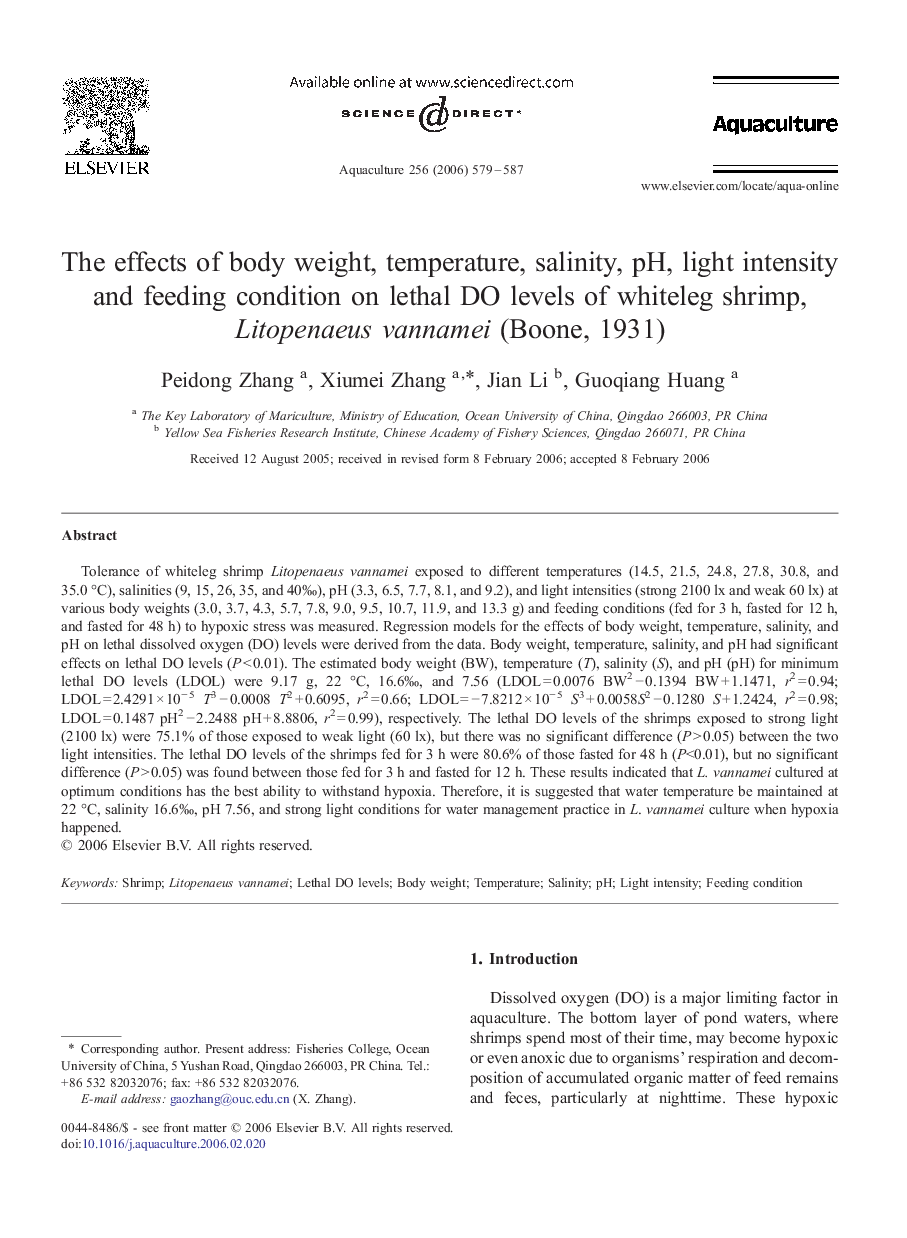| Article ID | Journal | Published Year | Pages | File Type |
|---|---|---|---|---|
| 2425958 | Aquaculture | 2006 | 9 Pages |
Tolerance of whiteleg shrimp Litopenaeus vannamei exposed to different temperatures (14.5, 21.5, 24.8, 27.8, 30.8, and 35.0 °C), salinities (9, 15, 26, 35, and 40‰), pH (3.3, 6.5, 7.7, 8.1, and 9.2), and light intensities (strong 2100 lx and weak 60 lx) at various body weights (3.0, 3.7, 4.3, 5.7, 7.8, 9.0, 9.5, 10.7, 11.9, and 13.3 g) and feeding conditions (fed for 3 h, fasted for 12 h, and fasted for 48 h) to hypoxic stress was measured. Regression models for the effects of body weight, temperature, salinity, and pH on lethal dissolved oxygen (DO) levels were derived from the data. Body weight, temperature, salinity, and pH had significant effects on lethal DO levels (P < 0.01). The estimated body weight (BW), temperature (T), salinity (S), and pH (pH) for minimum lethal DO levels (LDOL) were 9.17 g, 22 °C, 16.6‰, and 7.56 (LDOL = 0.0076 BW2 − 0.1394 BW + 1.1471, r2 = 0.94; LDOL = 2.4291 × 10− 5 T3 − 0.0008 T2 + 0.6095, r2 = 0.66; LDOL = − 7.8212 × 10− 5 S3 + 0.0058S2 − 0.1280 S + 1.2424, r2 = 0.98; LDOL = 0.1487 pH2 − 2.2488 pH + 8.8806, r2 = 0.99), respectively. The lethal DO levels of the shrimps exposed to strong light (2100 lx) were 75.1% of those exposed to weak light (60 lx), but there was no significant difference (P > 0.05) between the two light intensities. The lethal DO levels of the shrimps fed for 3 h were 80.6% of those fasted for 48 h (P<0.01), but no significant difference (P > 0.05) was found between those fed for 3 h and fasted for 12 h. These results indicated that L. vannamei cultured at optimum conditions has the best ability to withstand hypoxia. Therefore, it is suggested that water temperature be maintained at 22 °C, salinity 16.6‰, pH 7.56, and strong light conditions for water management practice in L. vannamei culture when hypoxia happened.
